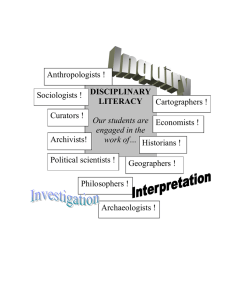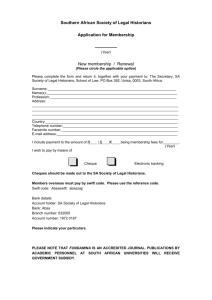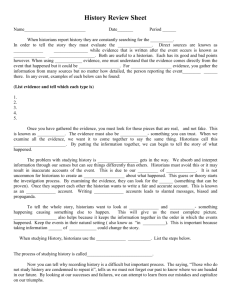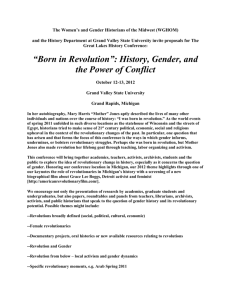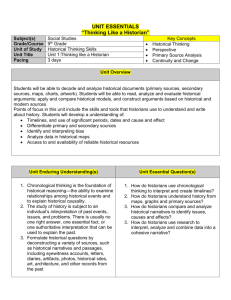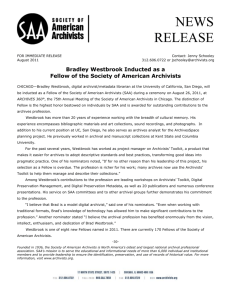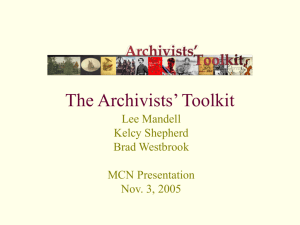Historians and the search for primary source materials
advertisement
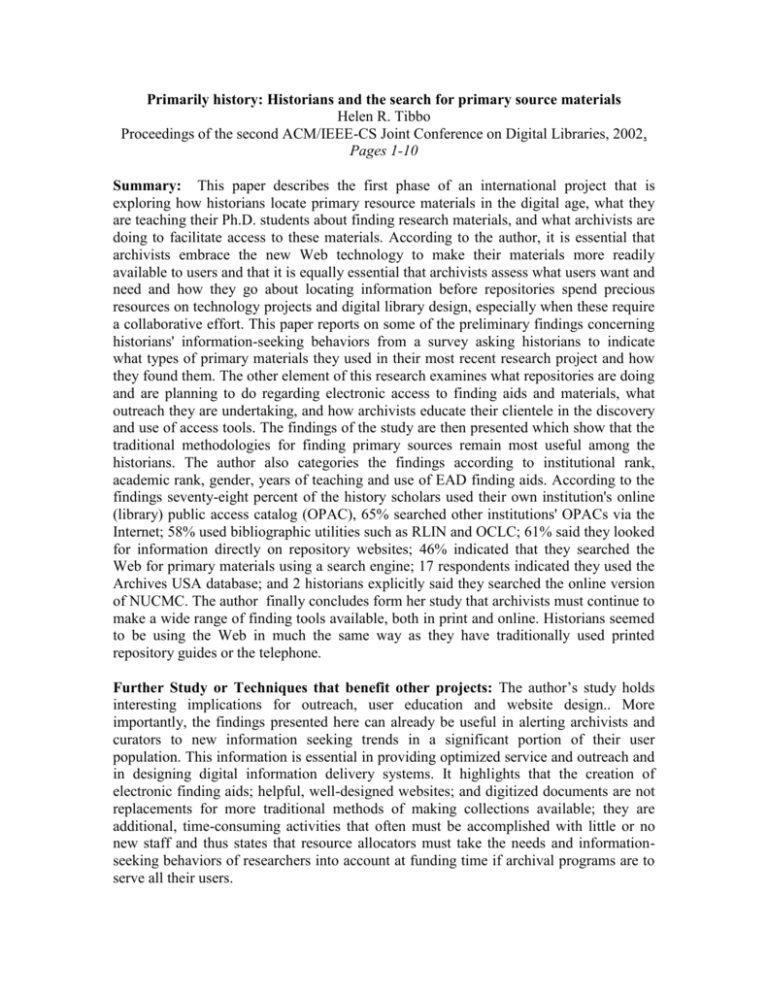
Primarily history: Historians and the search for primary source materials Helen R. Tibbo Proceedings of the second ACM/IEEE-CS Joint Conference on Digital Libraries, 2002, Pages 1-10 Summary: This paper describes the first phase of an international project that is exploring how historians locate primary resource materials in the digital age, what they are teaching their Ph.D. students about finding research materials, and what archivists are doing to facilitate access to these materials. According to the author, it is essential that archivists embrace the new Web technology to make their materials more readily available to users and that it is equally essential that archivists assess what users want and need and how they go about locating information before repositories spend precious resources on technology projects and digital library design, especially when these require a collaborative effort. This paper reports on some of the preliminary findings concerning historians' information-seeking behaviors from a survey asking historians to indicate what types of primary materials they used in their most recent research project and how they found them. The other element of this research examines what repositories are doing and are planning to do regarding electronic access to finding aids and materials, what outreach they are undertaking, and how archivists educate their clientele in the discovery and use of access tools. The findings of the study are then presented which show that the traditional methodologies for finding primary sources remain most useful among the historians. The author also categories the findings according to institutional rank, academic rank, gender, years of teaching and use of EAD finding aids. According to the findings seventy-eight percent of the history scholars used their own institution's online (library) public access catalog (OPAC), 65% searched other institutions' OPACs via the Internet; 58% used bibliographic utilities such as RLIN and OCLC; 61% said they looked for information directly on repository websites; 46% indicated that they searched the Web for primary materials using a search engine; 17 respondents indicated they used the Archives USA database; and 2 historians explicitly said they searched the online version of NUCMC. The author finally concludes form her study that archivists must continue to make a wide range of finding tools available, both in print and online. Historians seemed to be using the Web in much the same way as they have traditionally used printed repository guides or the telephone. Further Study or Techniques that benefit other projects: The author’s study holds interesting implications for outreach, user education and website design.. More importantly, the findings presented here can already be useful in alerting archivists and curators to new information seeking trends in a significant portion of their user population. This information is essential in providing optimized service and outreach and in designing digital information delivery systems. It highlights that the creation of electronic finding aids; helpful, well-designed websites; and digitized documents are not replacements for more traditional methods of making collections available; they are additional, time-consuming activities that often must be accomplished with little or no new staff and thus states that resource allocators must take the needs and informationseeking behaviors of researchers into account at funding time if archival programs are to serve all their users.
